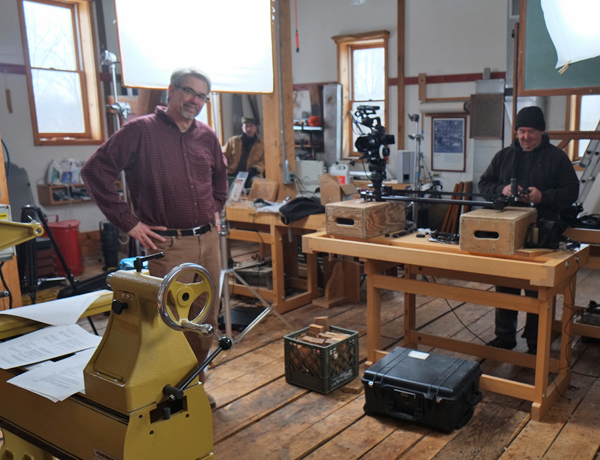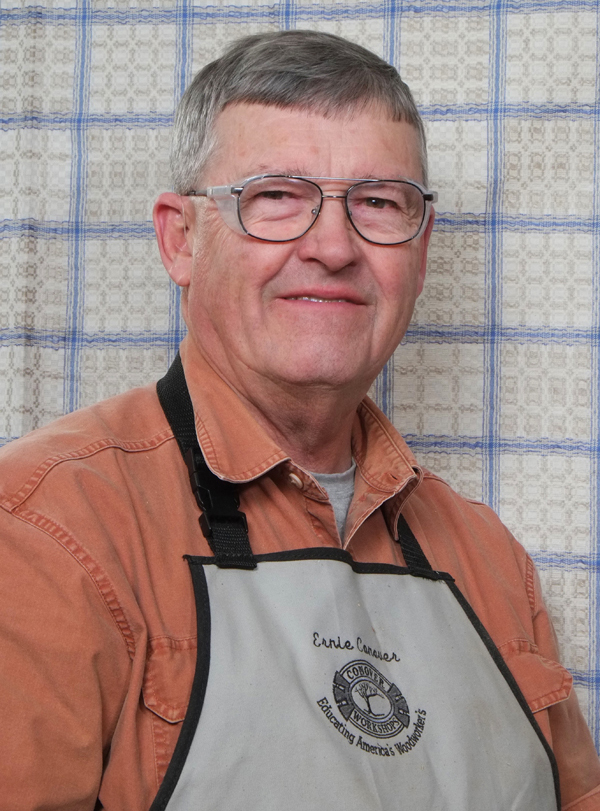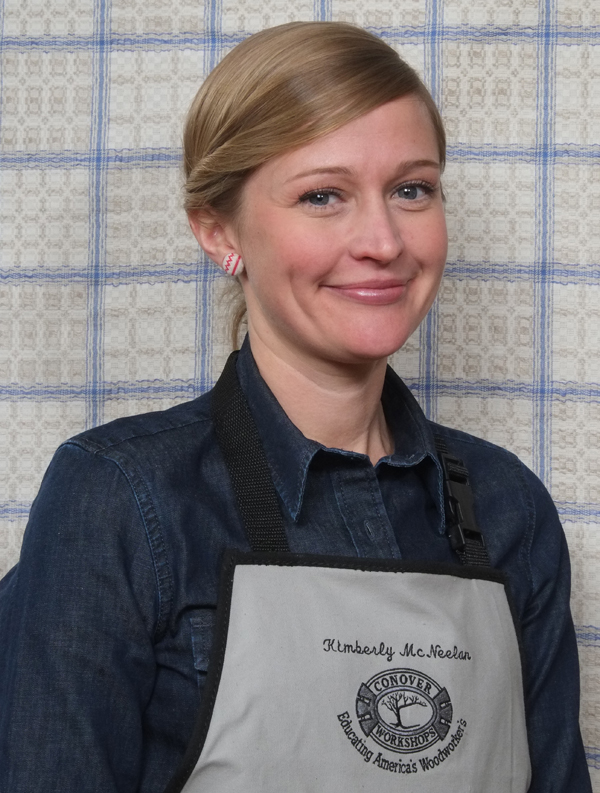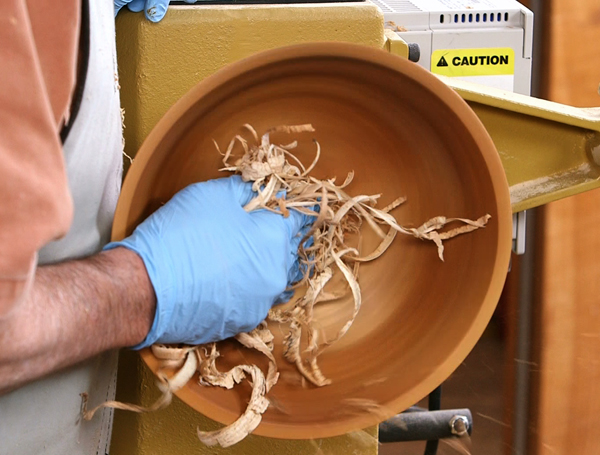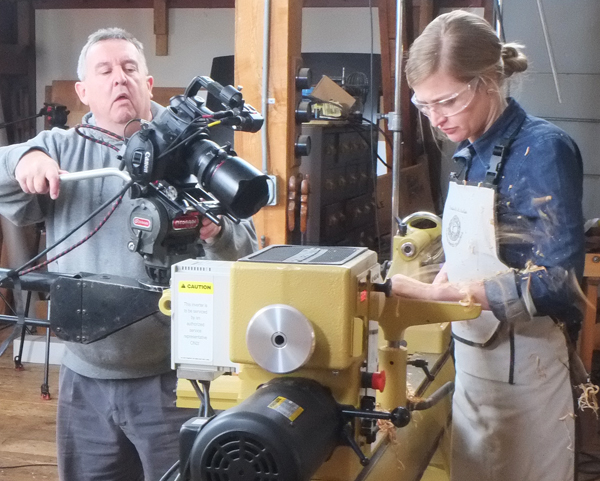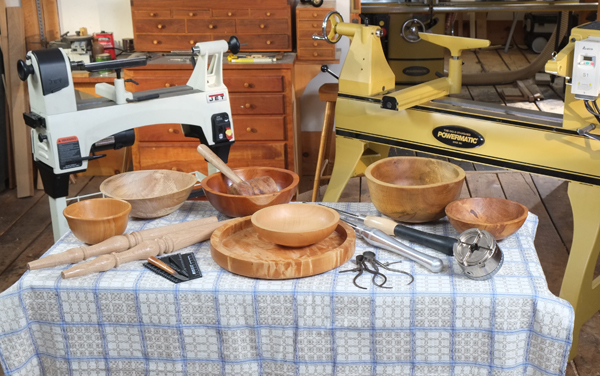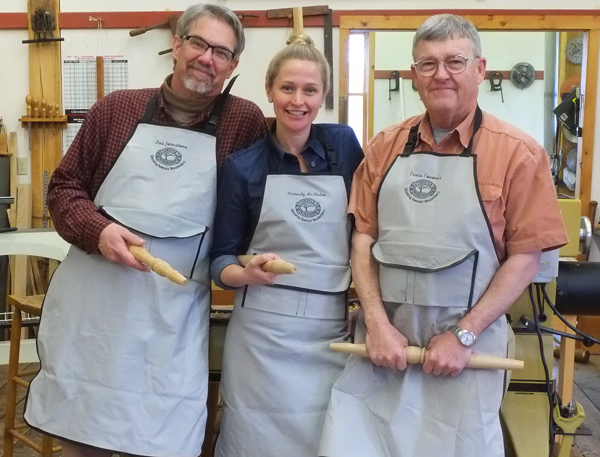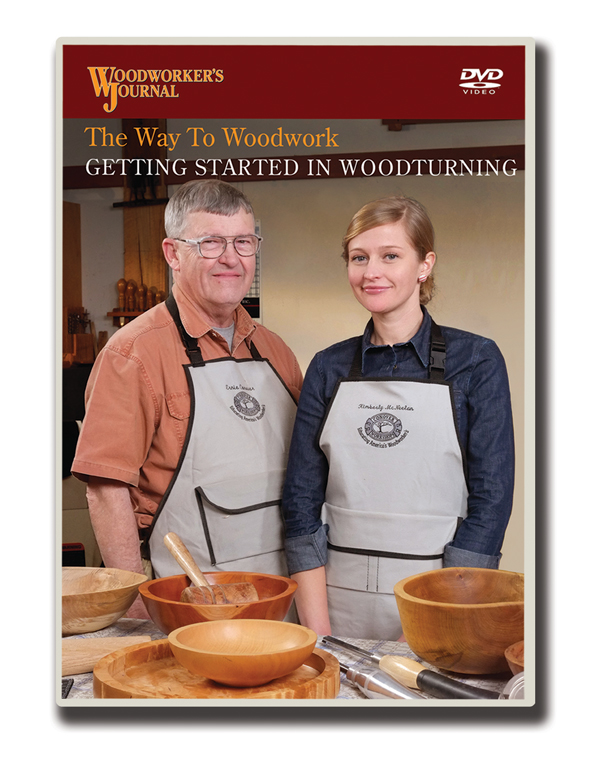
The latest DVD from Woodworker’s Journal focuses on woodturning – an aspect of woodworking that has an appeal to woodworkers of all stripes, including our own Rob Johnstone.
Rob, who is the producer of the new DVD, talks about why he likes woodturning, how he got into it, and why he decided to make a DVD about it (with the help of sponsors Rockler Woodworking and Hardware, Powermatic and Easy Wood Tools) – as well as what’s on the DVD – in the interview below. — Joanna Werch Takes, Editor
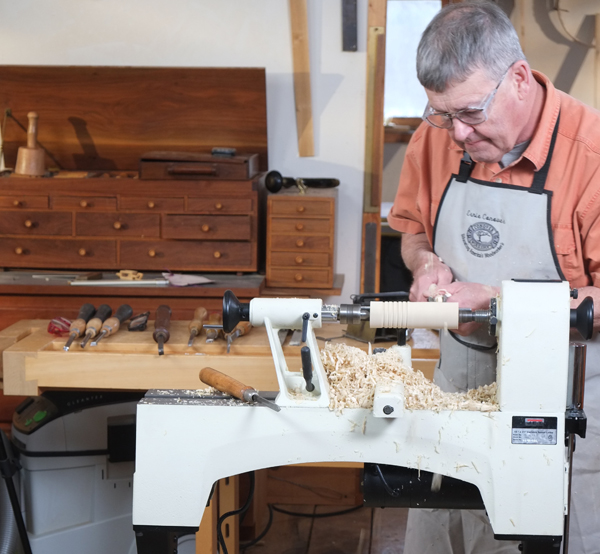
Chris Marshall: Rob, while you’ve been a professional woodworker for more than 40 years, woodturning is a relatively new pursuit for you. What kept you from learning woodturning for so long? Do other woodworkers you meet share the same hesitation(s)?
Rob Johnstone: Woodturning had always stayed just below my radar: it looked cool, but I had more than enough projects (professional and personal) to keep me busy with in my shop — so I just never even gave it a try. Then, at a JET tools event, out of curiosity I asked the late Steve Blenk to show me how to do a couple of things. Five minutes later, I wanted a lathe and could not wait to get started. Even so, it took me another year to buy a lathe. Since then, it has become my woodworking escape. I can make a bowl or a toy in an evening, becoming totally immersed in the process, and really just let the cares of the world flow by.
Chris Marshall: Why is turning a worthy pursuit that we all should try? What makes it such a great pastime and a practical enhancement to woodworking?
Rob Johnstone: Wow, answering that question fully could take a long time, so I am just going to try to hit a couple of highlights. First off, it is complementary to “flat” woodworking. You can use it to take your craft to the next level. Spindle turning can add awesome legs, decorative details, knobs, railings … tons of things to your furniture making that you’d have to buy if you didn’t have a lathe.
Add to that, you don’t have to be an expert woodturner to get lovely and usable projects off the lathe. This DVD is all about that fact — with just a bit of instruction you can be safely making useful and fun stuff right away. And did I mention that it is really fun? (Really fun!)
Chris Marshall: Why is woodturning really gaining momentum these days, in your opinion? How has the craft gotten more accessible?
Rob Johnstone: Good question. Some important reasons are that lathes have become more affordable, specifically the mini and midi lathes. And some of those smaller lathes are serious tools that provide a quality turning experience. Turning information is more accessible — one good example of that is our woodturning column in Woodworker’s Journal, It is very popular and gives “regular” woodworkers a view of the craft that is enticing. There are some serviceable turning tools that are less expensive to purchase, lowering the cost of entry into the skill. And now there are even carbide insert tools that reduce how much a person needs to sharpen, another barrier broken. It does seem to be a hobby whose time has come.
Chris Marshall: Ernie Conover has been the “Woodturning” columnist in our print magazine for several years, and he’s one of the preeminent turners in America. What impresses you most about his teaching and woodturning skills?
Rob Johnstone: Ernie is a national treasure! He is a true gentleman, fun to be around and he has likely forgotten more about woodturning than most people will ever know. Plus, he is an excellent teacher who has done it for so long that his approach to demonstrating the subject is pure gold. We are lucky to have him on our team.
Chris Marshall: Kimberly McNeelan, Ernie’s cohost on this DVD, is a relative newcomer to the pages of Woodworker’s Journal. Please share a bit of her background in woodworking and why she was a great choice for this project.
Rob Johnstone: Kim is a rising star in the world of woodworking. In addition to being a skillful woodworker, she has a true passion for the craft. Her thoughtful and artistic approach to woodworking drew me to her on a professional level. We chose her for this DVD because she has a lot of experience teaching woodworking, and is a professional woodworker day in and day out — but she is not a “top tier” woodturner. Her perspective in presenting this information was extremely important as we refined our message for people who wanted to get started in this craft. She also has skill at putting up with old codgers like Ernie and me, which turned out to be an invaluable talent in this DVD project!
Chris Marshall: There are many woodturning DVDs on the market. What makes “Getting Started in Woodturning” unique in the market of educational turning DVDs?
Rob Johnstone: I have often said you only need three things to get started in woodturning: a lathe, some tools to cut and shape the wood, and a way to sharpen those tools. Which is true, but a bit of information on how to actually put all those components into play is also critical — and that’s what we provide in this DVD.
This DVD follows the principles we established in our “Way to Woodwork” series of teaching both correct theory and proper technique. Which sounds kinda boring, but another way to say it is that we teach the “why” along with the “how.” So, in a fun and entertaining manner, we provide all the information anyone would need to get up and running in woodturning, safely, and producing good quality woodturning projects in no time.
Chris Marshall: What are a few of your favorite “highlights” on this DVD?
Rob Johnstone: There is section with Kimberly on how to use a bowl turning gouge that is worth the price of admission. Ernie going through how to make beads and coves is also pure gold. One thing that struck me when I watched the whole DVD from start to finish was how much Ernie and Kimberly really love woodturning and how much that shows through. You just can’t write that in a script.
Chris Marshall: Sharpening is so important to successful woodturning. How does the DVD help to demystify and simplify the process of sharpening turning tools?
Rob Johnstone: There is a special bonus section to the DVD just on sharpening using a Wolverine Jig. Sharpening is such a big topic that we decided to demonstrate one really solid technique for getting it done and let the viewer decide where to go with it.
Chris Marshall: Does this DVD cover some start-to-finish projects? What are they?
Rob Johnstone: The only start to finish project covered is a bowl that we make from a large American beech blank — that is covered in the faceplate turning section. In spindle turning, we turn a leg for a Windsor chair. It teaches how to do all the basic spindle turning techniques in a practical way.
Chris Marshall: While “Getting Started in Woodturning”is intended to be a fundamental “basics” course, is there content here that will appeal to even seasoned woodturners?
Rob Johnstone: The focus of the DVD is, as you say, for those starting out in the craft. But as a turner of moderate skill, I learned a bunch of things from the DVD. Ernie demonstrating the skew chisel made me want to trot out to my shop and get busy with a skew (a tool that has been tricky for me to learn). And, of course, when you actually get to watch a master turning on camera, you can pick up gem after gem of down-and-dirty how-to information. That is one of the beautiful things about video.
To learn more about “Getting Started in Woodturning” or to order a copy of the DVD, click here.
